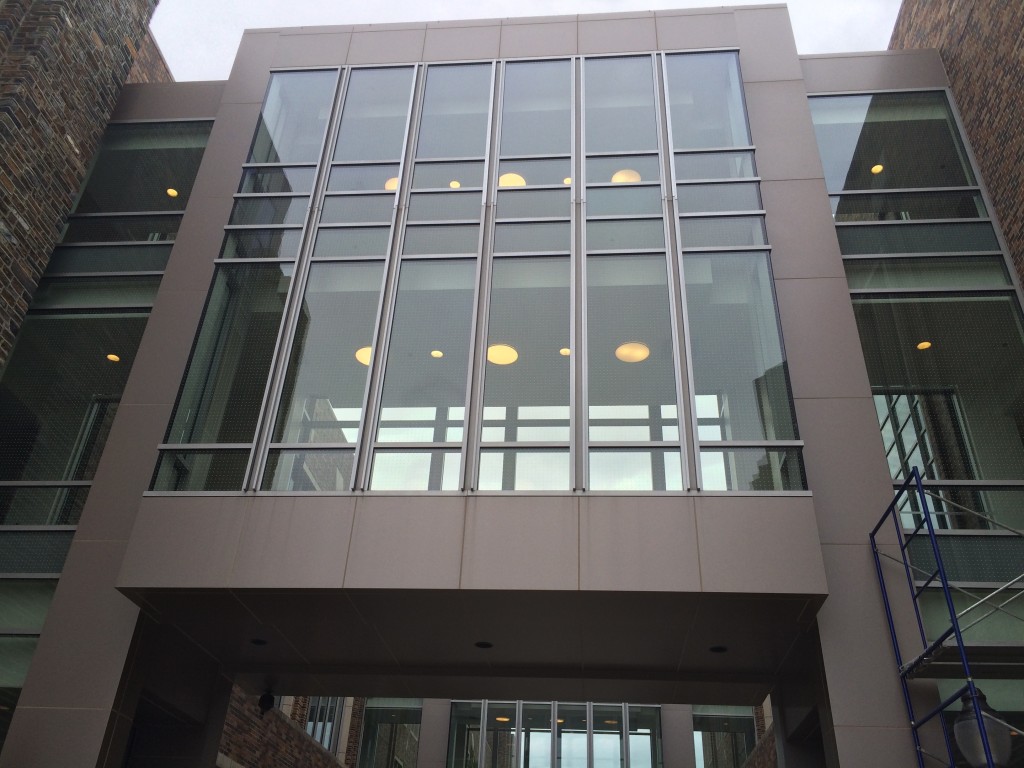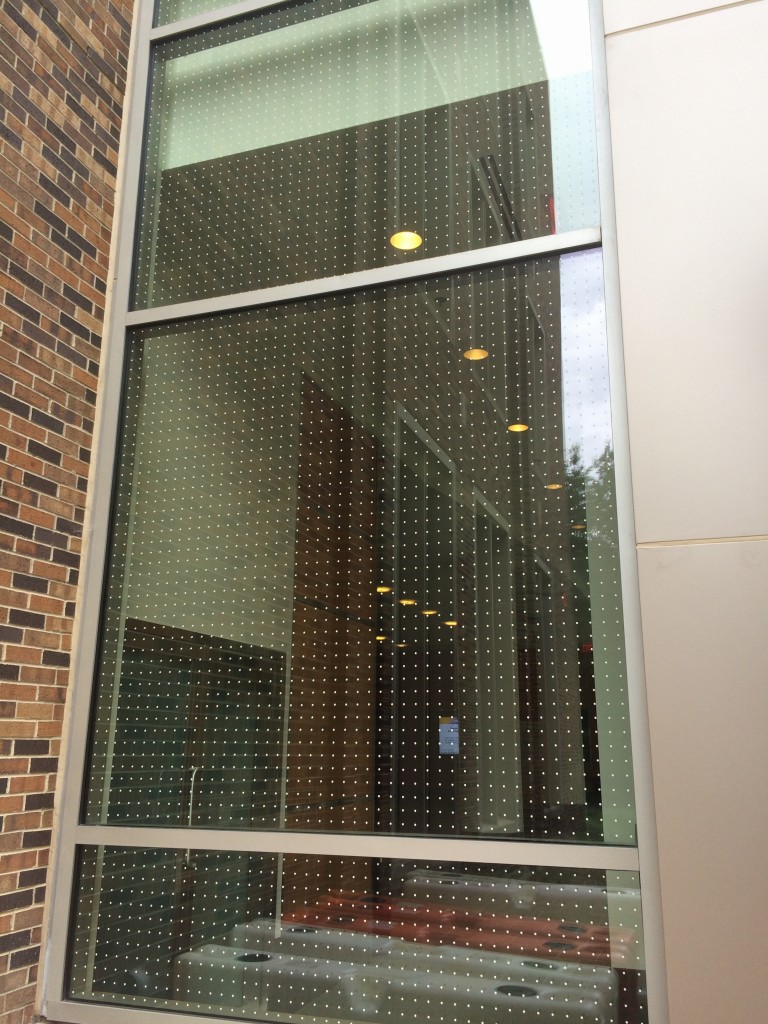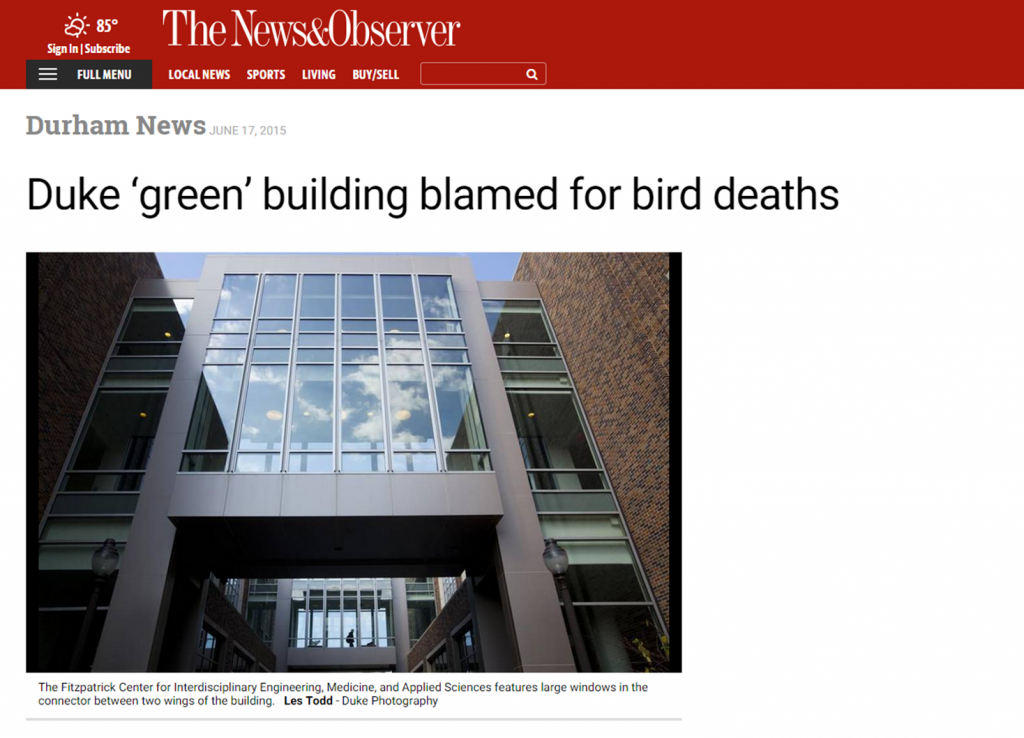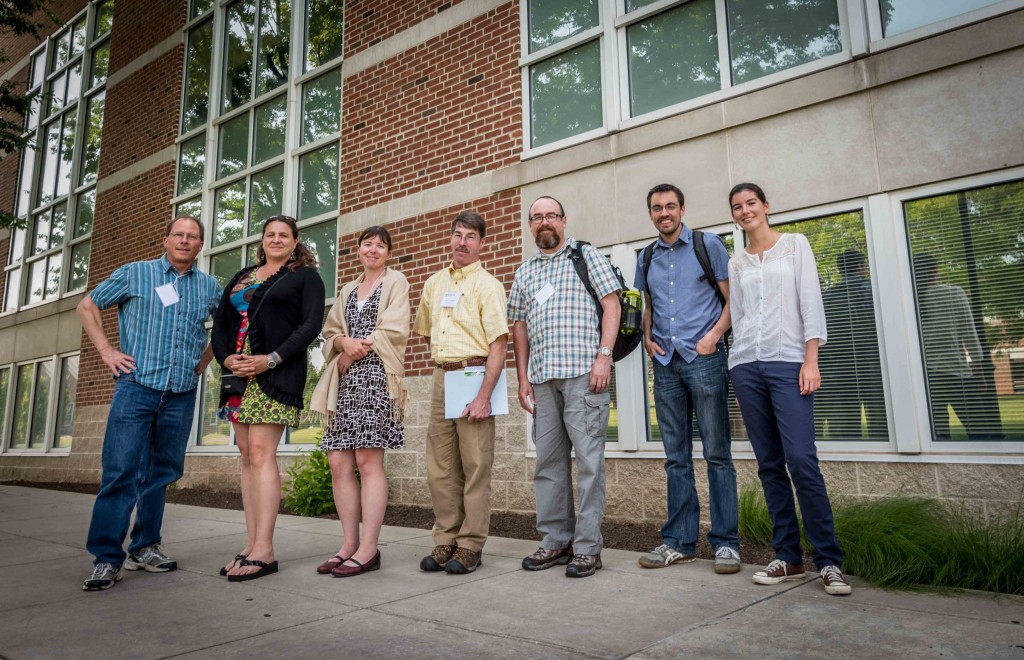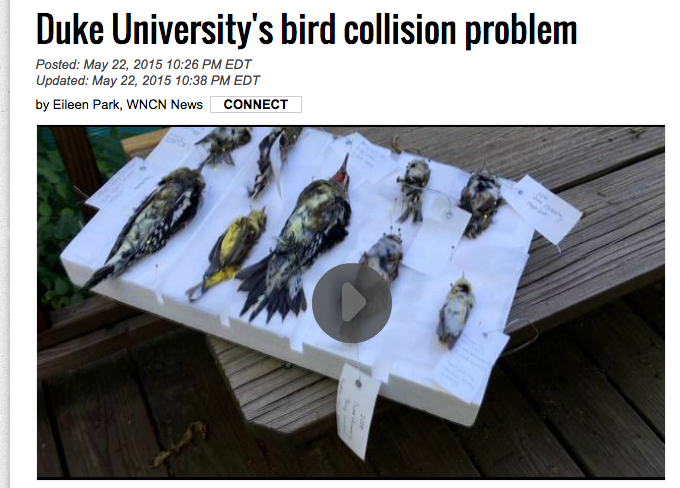Read the article here!
We got a lot of media attention for having the “deadliest” building of all, as you may recall. We identified the engineering building, CIEMAS, as the building with the most bird-window collisions with 72% of the strikes. The obvious solution to prevent collisions on campus, then, was to retrofit this structure and stop about 2/3 of the collisions.
After conversations with the administration in several occasions, and a through media coverage, Duke has decided to make CIEMAS bird friendly! This summer, dotted patterns were applied to the most dangerous structures for birds: glass walkways and large windows. We will continue to monitor collisions at the building to assess the efficacy of the patterns.
We invite other universities and organizations to do the same!


